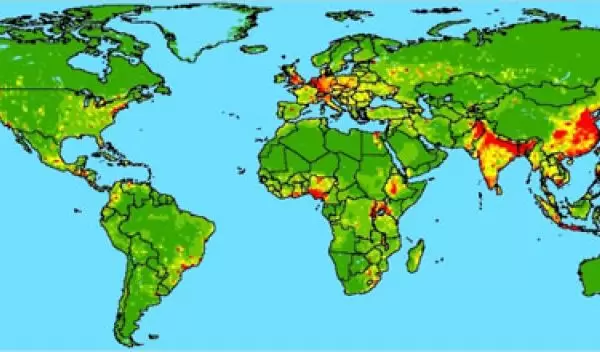
Predicting the Next Major Virus
In a paper published last February by the leading scientific journal Nature, scientists at the Consortium for Conservation Medicine (CCM) Wildlife Trust New York, the Zoological Society of London (ZSL), Columbia University (New York) and the University of Georgia announced a major breakthrough in the understanding of what causes diseases like HIV/AIDS and SARS to emerge, and how to further predict and prevent future devastating pandemics by plotting a global map of "Disease Hotspots."
Collaborating author Peter Daszak, executive director of the Consortium for Conservation Medicine at Wildlife Trust, tells us why this research is so important. Here is part of his interview. To read the full interview, go to the Wildlife Trust Web site.
Q: Peter, tell me about this breakthrough research.
A: We found that, first, emerging diseases are definitely increasing over time, something that has been proposed, but not proven until now. Second, we showed that the factors that cause these diseases to emerge are directly related to us--humans--that is, population growth and the way we change the environment. We found that the most common emerging infectious diseases (EIDs) are caused by drug-resistant microbes, and by microbes that come from other animals (especially wildlife). This latter group includes most of the really significant EIDs, or zoonoses, like HIV/AIDS, influenza and Ebola.
One of the big findings of our work is that these diseases are on the rise also, and that they are most likely to emerge in the future from developing countries in the tropics, a region where our surveillance programs are poorest. So our work shows us that we need to change the way we allocate global funds and scientific expertise to really beat this problem.
Q: So, emerging diseases are on the rise but in particular zoonoses. What are zoonoses and why do you think they're on the rise?
A: Zoonoses are infectious diseases caused by microbes that come from other animals, for example, mad cow disease, monkeypox, Ebola virus, HIV/AIDS. They're on the rise because there is increasing contact with wildlife in regions where we're encroaching on their habitat. Hunting wildlife for food, bringing livestock into contact with them and the wildlife trade are some of the most important ways zoonoses emerge. Also, don't forget we live in a globalized planet, where new pathogens can rapidly spread through our population.
Q: What sparked your interest in this line of research? Were you always interested in the spread of pandemic diseases?
A: I first got interested in emerging diseases when I was part of a team that discovered a new disease of frogs that was wiping out populations in the tropics. I worked at the Centers for Disease Control in Atlanta at the time, and I noticed the similarities between this wildlife disease and the emerging diseases affecting people (HIV, hantavirus, Lyme disease). It was amazing to me that these diseases seem to emerge out of nowhere, and, despite all the research, no one seemed to have analyzed the processes through which they emerge.
Q: What was the most unexpected or exciting result from the research, what surprised you?
A: That we've managed to identify a major gap in the way we deal with emerging diseases on a global scale. That is, while most of our research effort is focused on the richer, developed countries (the ones that can afford it most), the most significant EIDs will be emerging in the developing countries of the tropics. Our work means we can now target these EID 'hotspots' for what I call "Smart Surveillance," and try to identify the next HIV or SARS before it even emerges.
-- Anthony Ramos, Wildlife Trust New York ramos@wildlifetrust.org
This Behind the Scenes article was provided to LiveScience in partnership with the National Science Foundation.


